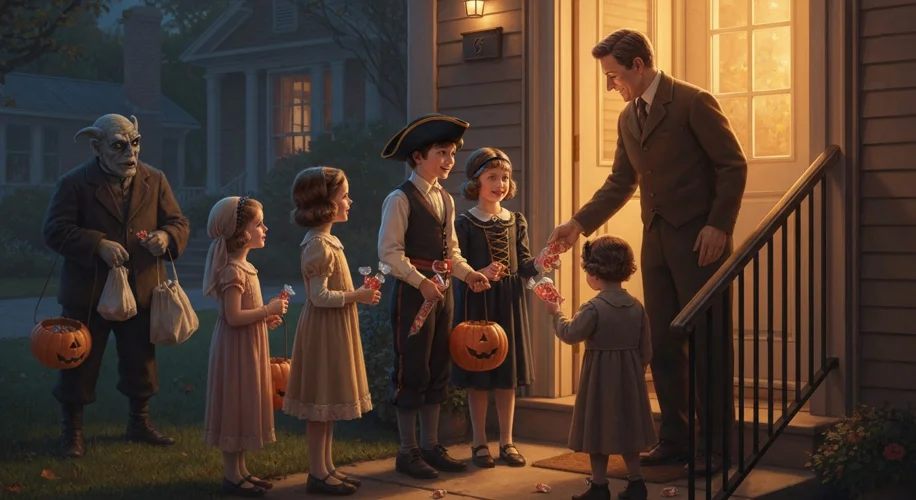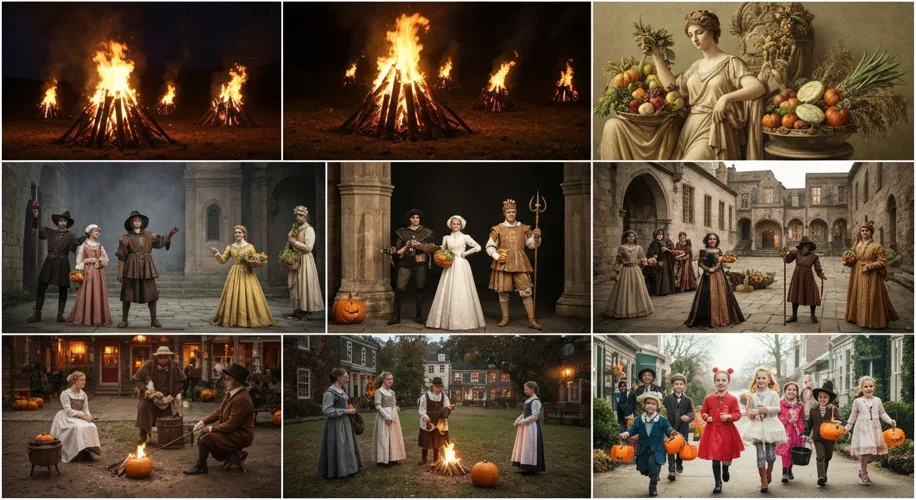The air chills, leaves turn to fiery hues, and a certain delicious unease settles over the land. It’s the season for pumpkin spice, cozy sweaters, and, of course, Halloween. But have you ever wondered how this night of ghosts, goblins, and glorious candy came to be? The story of Halloween is a long and winding one, stretching back through millennia, woven from ancient pagan rituals, religious observances, and the enduring human fascination with the veil between worlds.
Our journey begins not with grinning jack-o’-lanterns, but with the ancient Celts, who lived in the region that is now Ireland, the United Kingdom, and northern France. Around 2,000 years ago, they celebrated their new year on November 1st. This day marked the end of summer and the harvest and the beginning of the dark, cold winter, a time of year that was often associated with death. To commemorate this transition, they observed a festival called Samhain (pronounced sow-in).
The Celts believed that on the night before the new year, the boundary between the worlds of the living and the dead became blurred. On the night of October 31st, they celebrated Samhain, believing that the ghosts of the dead returned to earth.  Not only were Samhain spirits thought to reappear in our world, but the Celts also believed that the spectral presence of other, more mischievous fairies and spirits could also cross over. To appease these otherworldly visitors, Druids, or Celtic priests, would build huge sacred bonfires, where people gathered to burn crops and animals as sacrifices to the Celtic deities. During the celebration, Celts wore costumes, typically consisting of animal heads and skins, and attempted to tell each other’s fortunes.
Not only were Samhain spirits thought to reappear in our world, but the Celts also believed that the spectral presence of other, more mischievous fairies and spirits could also cross over. To appease these otherworldly visitors, Druids, or Celtic priests, would build huge sacred bonfires, where people gathered to burn crops and animals as sacrifices to the Celtic deities. During the celebration, Celts wore costumes, typically consisting of animal heads and skins, and attempted to tell each other’s fortunes.
After the Romans conquered the majority of the Celtic territory by 43 A.D., they combined two of their own festivals with the traditional Celtic celebration of Samhain. The first was Feralia, a day in late October when the Romans traditionally commemorated the passing of the dead. The second was a day to honor Pomona, the Roman goddess of fruit and trees. The symbol of Pomona is the apple, and the tradition of bobbing for apples at Halloween may have its roots in this commemoration.
As Christianity spread throughout the Celtic lands, the Church faced a challenge. The pagan festivals were deeply ingrained in the culture. So, in the 9th century, the Church designated May 13th as All Saints’ Day, a day to honor saints. Later, Pope Gregory III and Pope Gregory IV expanded the observance and moved the date to November 1st, effectively creating a Church-sanctioned holiday that overshadowed the pagan Samhain. The evening before became known as All Hallows’ Eve, which eventually morphed into Halloween.
Later, November 2nd was established as All Souls’ Day, a day to honor the dead. This day was celebrated similarly to Samhain, with big bonfires, parades, and dressing up in costumes as saints, angels, and devils. It’s believed that the mingling of these traditions helped to further embed the secular, and at times spooky, elements of Halloween into the cultural consciousness.
When Halloween made its way to America, it was a mix of influences. In the 19th century, Irish and Scottish immigrants brought their Halloween traditions with them. Initially, American Halloween was very different from the spooky holiday we know today. It was more about community gatherings and parties, where neighbors would share stories of the dead, dance, and sing. There was also an element of mischief and pranks, leading to vandalism in some areas.
By the early 20th century, there was a move to strip Halloween of its superstitious and religious undertones, turning it into a secular holiday. Community leaders encouraged parties for children and adults alike. This era saw the rise of trick-or-treating. The practice of going door-to-door for treats, known as “guising” in Scotland and Ireland, became a way to redirect the mischief of Halloween into a more communal and child-friendly activity. 
As the decades progressed, Halloween continued to evolve. The 1930s and 1940s saw the popularization of costumes, parades, and community-organized events. The post-World War II baby boom fueled a surge in Halloween’s popularity, with more families celebrating and the demand for costumes and candy skyrocketing.
The spooky narratives and imagery we associate with Halloween—ghosts, witches, vampires, and Frankenstein’s monster—found fertile ground in popular culture. Gothic literature, horror films, and even comic books played a significant role in shaping the modern Halloween aesthetic. The very essence of Halloween is its embrace of the eerie, the mysterious, and the slightly terrifying, tapping into a primal human fascination with the unknown.
Today, Halloween is a global phenomenon, celebrated with unique twists in different cultures. From the elaborate ofrendas of Día de Muertos in Mexico, which honors deceased loved ones, to the playful

